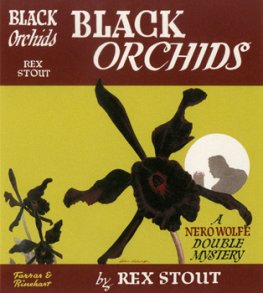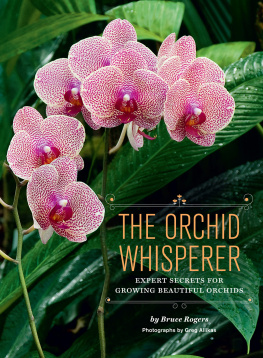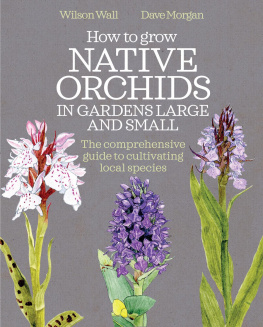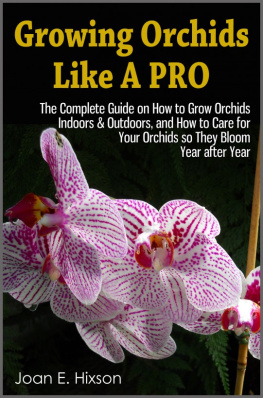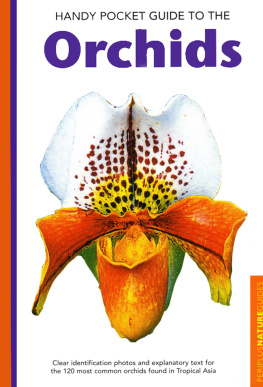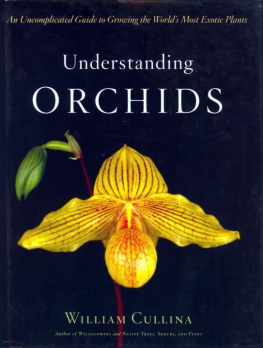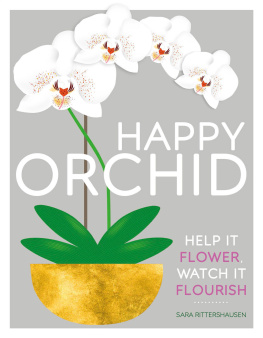Bloom-Again Orchids

Bloom-Again Orchids
50 Easy-Care Orchids That Flower Again and Again and Again
judywhite


Mention of trademark, proprietary product, or vendor does not constitute a guarantee or warranty of the product by the publisher or author and does not imply its approval to the exclusion of other products or vendors.
Text by judywhite. Photographs by judywhite/GardenPhotos.com.
Copyright 2009 by judywhite. All rights reserved.
Published in 2009 by Timber Press, Inc.
The Haseltine Building
133 S.W. Second Avenue, Suite 450
Portland, Oregon 97204-3527
www.timberpress.com
2 The Quadrant
135 Salusbury Road
London NW6 6RJ
www.timberpress.co.uk
ISBN-13: 978-1-60469-055-2
Printed in China
Library of Congress Cataloging-in-Publication Data
White, Judy.
Bloom-again orchids : 50 easy-care orchids that flower again and again and again / judywhite.
p. cm.
Includes bibliographical references and index.
ISBN 978-1-60469-055-2
1. Orchids. 2. OrchidsVarieties. I. Title.
SB409.W528 2009
635.9344--dc22 2009022893
A catalog record for this book is also available from the British Library.
For my sister, Joan White,
and my brother-in-law, David Weisbrod,
the most generous people I know.
My life would be impoverished if your love were not in it.
ACKNOWLEDGMENTS
This book would not exist if Tom Fischer and the good folk at Timber Press hadnt come to me with the idea in the first place. My foremost thanks, therefore, to all of them. Special thanks go to Helen Townes, whose gentle editorial hand was greatly appreciated, and to designer Laura Shaw.
Orchid-growing friends from all over the world have contributed knowledge, tips, and time, as well as consoling laughter over the years, when, as is inevitable no matter how experienced you get, an orchid or two is accidentally murdered. These invaluable compatriots are too many to name. Let me just say a general thank you to the North Jersey Orchid Society, who first welcomed me in, as well as to the Deep Cut Orchid Society, and the Greater New York Orchid Society, and hope those unnamed know how much they meant. I do want to thank in particular Marni Turkel, one of the finest growersand superb potterIve ever had the pleasure of knowing.
Deep and immense appreciation goes to the American Orchid Society, which every day strives to help thousands of beginner to advanced orchid growers. Special mention must go to the AOSs most excellent Jim Watson, and to my dear friend and former AOS Executive Director, Lee Cooke; both were always first to lend a hand.
I was privileged to photograph with abandon the pretty mugs of the orchids at Longwood Gardens over many years, usually under the good graces of former orchid curator, Mike Owen. I am grateful to Tom Purviance and John Salventi at Parkside Orchid Nursery for opening their greenhouses to me for some last-minute photos; thanks to my old friend Marc Hachadourian of the New York Botanical Garden for aiding that endeavor. I thank also head grower Robert Palmer of Sun Bulb/Better-Gro, who was generous with his time in discussing current and future orchid marketing trends for this book. The online community of OrchidBoard.com was also a fun and interesting resource.
Nearest to heart, I thank the powers-that-be for my mother, Ermalinda White, my sister, Joan White, bro-in-law David Weisbrod, nephew Jonathan Weisbrod, my sister, Janet White, who left us too early, and my father, the late great Jim White, as well as my married-into family of Doris Rice, Lizzie Rice Stokes, Carl Stokes, and Montague Stokes, who arrived during the making of this book, and beloved friends on both sides of the ocean: Jeanine Babcock, Bill Kopp, Rachel Kopp, Kathi and Bob Rogers, Fiona Gilsenan, Alan and Linda Detrick, Ian and Jude Hodgson, Graeme Bald, Carol and John Parfitt, Carry Akroyd, Gordon Monk, Agris and Gunta Krumins, Joy Larkcom and Don Pollard, and the late great Paddy Kitchen. They not only kept me awash in white light, funny e-mails, good food, and convivial moments, but in their own inimitable ways, usually unbeknownst even to them, these dear and talented people were instrumental in helping me count down from fifty in finishing this book.
And, finally, though certainly first, I thank Graham Rice for his constant commiseration, editorial input, keen insights, countless mugs of tea and unexpected glasses of wine, as well asmost importantlyhis wry humor and endless love. He of all people knows exactly how much it takes to write a book.
INTRODUCTION
Once upon a time, you needed a pot of gold to be able to call an orchid your own. Thankfully, those days are long gone. Now you cant even go to the supermarket without tripping over an orchid. Theyre everywhere, from big box stores to garden centers, florists and orchid nurseries, on eBay and Amazon.
Today, its not unusual to find orchids sold flowering in pots and baskets, packaged unbloomed in miniscule pots inside net bags (nicknamed Baggy Babies), or even trapped tightly in plastic blister packs like socket wrenches. That they survive and thrive shows, despite their exotic and fragile appearance, how tough orchids really are.
Orchids have been transformed from priceless to popular for several reasons beyond just their ruggedness. First, we figured out how to sow and grow their seeds, which need sterile, laboratory conditions. Then, we learned how to clone themagain, in sterile conditions. That made it possible to create literally millions of plants from one original, quickly and relatively cheaply.
And, during all these scientific breakthroughs, weve also been doing things by hand: taking pollen from one orchid plant and putting it on another, making over a hundred thousand kinds of artificial hybrids.
Add those factors together and you begin to understand where all those Phalaenopsis Moth Orchids come from.
The explanation goes further. Because orchids have the unique ability to interbreed among different species and even different types, weve been able to create groups of orchids that would never exist in nature. The aim has been plants with lots of easy-to-grow hybrid vigor and spectacular flowers, gorgeous orchids that are incredible survivors.
This mission has been particularly successful with the wide range of Cattleya-type orchids, as well as within all the interrelated Oncidium, the latter of which are often sold just as Intergeneric Orchids. Youll find the most dramatic variety within these two types than probably any other. Together with Phalaenopsis, these three major groups dominate the orchid plant mass markets.
Some orchids, however, are still partially or totally resistant to being cloned, and you see far fewer of their kind on the box-store scene. These include the easy-to-grow tropical ladyslippers (Paphiopedilum), among many others. Be sure to seek them out too, or youll miss some of the great treasures of the orchid world.
This book has a mission, tooto help you discover some of the more commonly available, easy-to-grow orchids, to aid in identifying plants that have no labels (as is all too often the case), and to assist in deciphering the sometimes incomprehensible names on the labels of plants that actually have them. Oh, yes, and to tell you how to grow and bloom themand have them bloom again and again.
Next page

